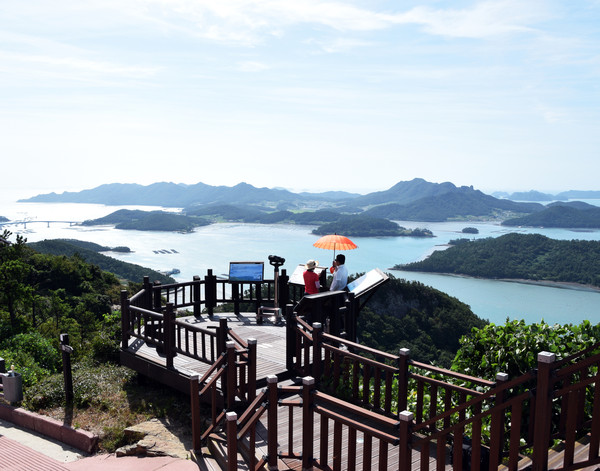Says Mayor Kim Hee-soo of Jindo County, Jeollanam-do Province
By Vice Chairman Sion Khan (senior feature editor) with Editor Lee Sam-sun
Mayor Kim Hee-soo of the Jindo County of the Jeollanam-do Province, in the opinion of many people in Korea, is a person who gives the impression of a man with ‘A Great Stone Face’ appearing in the story of a great American writer, Nathaniel Howthorne (1804-1864), who authored the book.
Shortly after the American Civil War, a boy named Ernest hears from his mother that a child resembling a large rock face on a rocky hill will be born and become a great figure.
Ernest lives honestly and sincerely in expectation of meeting such a person when he grows up--thinking about how he will live like the person with ‘a great stone face.’
Over the years, he meets with many famous rich people, generals, politicians, and poets, but he fails to find one looking as good as the big rock face.’
One day when Ernest passed middle age, there was a time when he addressed the public, and a poet who was listening to the speech shouts that Ernest is the "big rock face."

However, Ernest, who has finished what he had to say, hopes in his heart that a wiser and better person than he will appear as a virtuous person like a big rock face.
It shows that great human values are not in worldly things such as money, honor, or power, but in the consistency of words, ideas, and life obtained through constant effort and performance.
Although he was not a very highly educated or famous politician, it is fortunate for Jindo-gun that a person who was born and raised in Jindo-gun and who started as a public official in 1974 and worked hard together became the leader of the Jindo County.
Some politicians ‘parachute down’ with a high degree of knowledge, authority, and central political connections, and others may be greedy politicians involved in corruption. However, many people tend to think that Mayor Kim Hee-soo is a pure native local leader who can serve and devote himself honestly and faithfully to the people and country of Jindo.
After four times of challenges, Mayor Kim was chosen by the people of Jindo County in the 2022 local government election to serve as a county mayor.

Jindo Island is a place that preserves the beautiful nature and clean environment of 230 islands, and is the only special folk culture and arts zone in Korea that has blossomed the cultural assets and brilliant culture and arts of the poetry, calligraphy, painting, and creativity that have been passed down from ancestors since ancient times.
Mayor Kim emphasizes that local specialties in agriculture and fisheries obtain from the culture and tourism industry and nature should be fostered as a key basic industry, which he cites as the key objectives of 2023.
For the development of the tourism industry in the Jindo County, the government has designated tourism as the main county policy and is making an all-out effort to carry it out.
In order to realize the coming tourism, the Jindo County is promoting tourism using various media and online contents.
The County is also is striving to attract tourists by developing new tourism products such as Jindo-Jeju-linked products and Gwanmaedo Island travel plans.
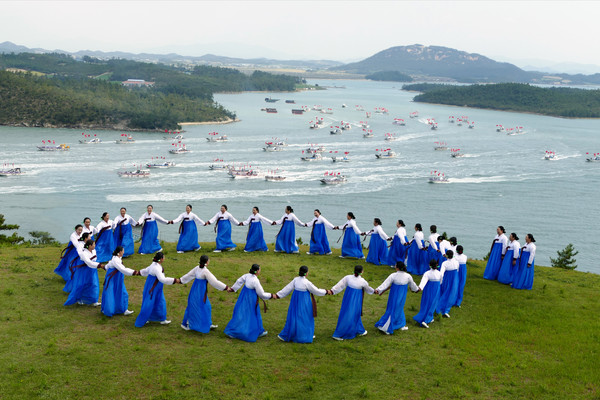
Jindo will come up with incentives for tourists to visit the Island by promoting projects that reflect tourism trends, such as operating a month-long living program on the Jindo Island, revitalizing camping tourism, and fostering wellbeing tourist attractions.
To realize home-stay tourist programs, tourists are led to stay in Jindo Island and enjoy travel by improving old tourist facilities, actively developing new tourist assets and visitor’s accommodation facilities, operating tour buses, and improving sanitary facilities.
In particular, the Jindo County government plans to actively accept reports of tourism inconveniences and improve difficulties so that more tourists will visit Jindo every year to prevent any inconvenience felt by visiting tourists during their stay in Jindo.
Second, looking at competitive cultural and tourism resources, Jindo County’s most competitive cultural and tourism resources are by far traditional culture and arts represented by poetry, literature, calligraphy, painting, and singing.
The Jindo County has been designated as Korea's only special zone for folk culture and arts, and it is recognized as a cultural and artistic home with four state-designated intangible cultural assets, six designated intangible cultural properties in Jeollanam-do, and a number of public and private art galleries.
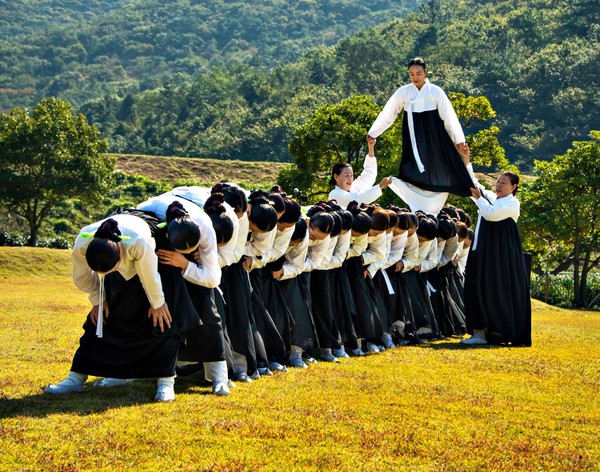
The Saturday Folk Travel Performance, which has been held every Saturday for 26 years this year, is a competitive cultural experience tourism program selected by the Ministry of Culture, Sports and Tourism by operating a variety of performance programs.
The natural environment is also a pride of Jindo Island. It is an attractive area for healing and natural tourist attractions, including Jodo-myeon, Gwanmae Island's Dadohaehaesang National Park, Sebang sunset, a coastal drive course where you can enjoy the beauty of Jindo Island at a glance, and a mysterious sea route called the ‘Miracle of Modern Moses.’
The Jindo County is also a sacred place for national defense and has excellent historical, educational and tourism resources.
Korean ancestors' patriotism can be seen through historical relics such as Uldolmok, the site of Admiral Yi Sun-sin's Myeongnyang Naval Battle Ground, Jindo Tower built to commemorate it and use it as a place for history education, Yongjang-seong Fortress, the base of Hangmong in Sambyeolcho at the end of the Goryeo Dynasty, and the Tomb of Wangom.
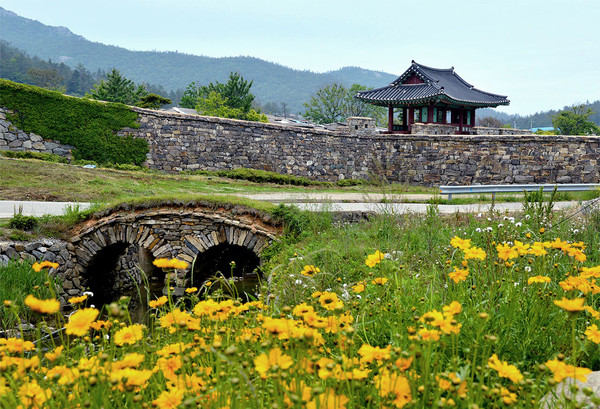
One of the competitive cultural and tourism resources is definitely to revitalize the industry by nature's ‘Mysterious Sea Road.’ It is a plan to foster cultural industry and festival revitalization.
The Jindo Mysterious Sea Road Festival was widely known around the world in 1975 when Ambassador Pierre Landy of France in Seoul visited and saw the Jindo Sea Road and introduced it to the French newspaper as a modern version of “Moses Miracle,’ and the Sea Road Festival celebrated its 43rd (2023.4.20~4.22) this year, starting with the first one in 1978.
It is a representative festival in the Jindo County, which is known nationwide enough to be selected as the best festival designated by the Ministry of Culture, Sports and Tourism and the Honorary Culture and Tourism Festival.
During the festival, due to the tidal difference, the sea of about 2km between Hoedong-ni of Gogun-myeon and Modo-ri of Uisin-myeon opens at a width of 30 to 40 meters, attracting tens of thousands of tourists to Jindo Island every year to see the rare phenomenon.

This year, the basic framework of the traditional festival will be maintained, but the sea route visit program will be reproduced as media art by incorporating the latest digital technology to maximize the mystery of the sea route.
Through planning a substantial main program that fits the theme of the festival, diversifying the genre of opening performances, and operating side events that incorporate the latest technologies, it aims to increase the visitor rate and develop it into a stay-at-home tourism by making various programs at night.
The Jindo County will create a photo zone in the festival venue and create an experience program where tourists can participate in the festival.
The County will also build the foundation for globalization of the festival by expanding foreign tourists living in Korea and operating various global programs targeting foreign tourists so that the number of foreign tourists visiting the festival can increase every year.
The County also has a plan to foster and develop representative specialties and food presented by nature in Jindo Island.
Jindo Island's sea is rich in food such as plankton due to the development of cold water, and the meat quality of marine products is chewy due to the high flow rate.

Jindo Island's pride is a variety of marine products, including various seaweeds such as Tot, which account for the top production in the country, along with abalone, blue crab and ray fish.
The farmland is also abundant and so various agricultural products are cultivated.
Jindo Dog, the biggest pride of Jindo Island, has been designated as Natural Asset No. 53, protected and nurtured, and is Korea's representative state dog and world-class dog with excellent bravery, boldness, and loyalty.
Hongju wine is a traditional liquor of Jindo Island and is made using a herb called Zicho.
Jindo Hongju wine, which is red, is loved by drinkers because its taste and aroma are as sweet and unique as its color.
And the future project that Jindo plans to foster as a bridgehead for the leap forward in the cultural industry is "Creating Jindo-style Santiago Pilgrimage Travel Couse (126km in six courses)."
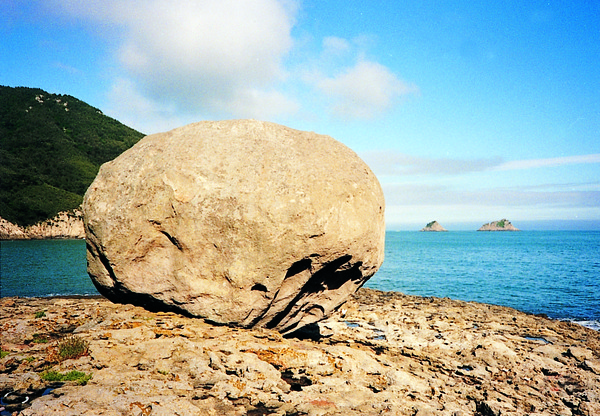
As mentioned earlier, more tourists will visit Jindo Island thanks to themed travel products.
In particular, by creating a Jindo-style Santiago pilgrimage route (126km in six courses), Jindo intends to create a new wind in revitalizing the local economy by attracting tourists staying there.
In order to revitalize Nokjin tourist attractions and Hoedong tourist attractions, it plans to reorganize old facilities and develop infrastructure around tourist attractions.
It also plans to promote marine tourism, such as creating a tourist coastal road with a good view, making Sebang Sunset a tourist attraction, and creating a luxury coast in Gomsol, Gwanmaedo Island.
In addition to maintaining facilities, the Jindo County will generously invest in tourism contents to develop various contents that tourists can experience and enjoy, such as AR/VR, metaverse and media arts.
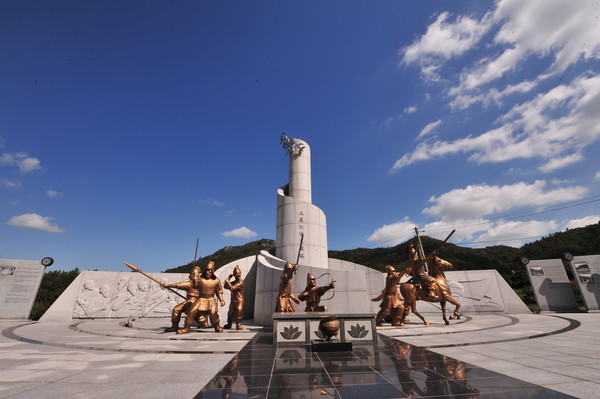
Private-capital project will also be encouraged so that various private capital development projects under way can be completed as soon as possible.
Jindo Island is the third largest island in Korea after the Jeju Island and the Geoje Island, located at the end of the southwest coast of the country.
The area is about 360㎢, and it is located at 125°37'~126°28' east longitude and 34°08'~34°35' north latitude.
Jindo-gun is the only special zone for folk culture and arts in Korea that has blossomed the brilliant culture and arts of poetry, calligraphy, painting, and creativity, which consists of 230 islands, including 45 inhabited islands and 185 uninhabited islands.
It is a treasure island with many historical relics such as Yongjang Sanseong Fortress and Namdo Seokseong Fortress, as well as cultural heritages such as Ssitgimgut folk religious rite, drum dance, and Ganggangsullae ring dance of women.
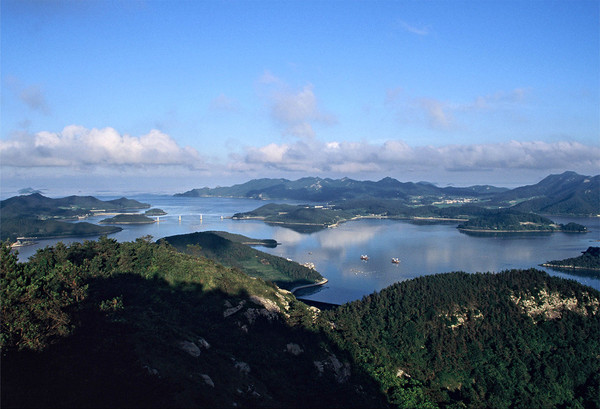
And the Mysterious Sea Road in Hoedong Village, Gogun-myeon, is a place where world-class tourist attractions are located.
Here are further details of information about the Mysterious Sea Road Festival, one of the industries mainly fostered by Jindo-gun.
"Mysterious Sea Road" is a natural phenomenon in which the sea splits about twice a year in the 2km-wide sea between Modo-ri, Uisin-myeon, Jindo-gun, and Hoedong-ri, Gogun-myeon.
It has been said since ancient times that it was held with the earnest prayer of an old woman who lived here and separated from her family.
People have been living in Jindo Island for 500 years. At that time, the road to the island was not opened off the coast of Hoedong Village. In order to get to the nearby island (Geumho-do, Modo), the visitors had to use a raft.
However, there were many tigers living near this village.
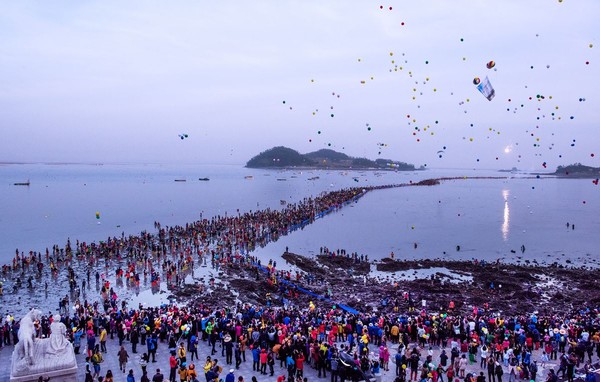
The name was Hodong (meaning Tiger Village) and it was given as such because it was a village where many tigers appeared.
Meanwhile, the villagers fled to Modo across the sea to avoid the tigers' attack.
However, all of them left the village by mistake, leaving their elderly grandmother named Ppong.
Grandma Ppong, who remained in the empty village, prayed every day to go out to the beach and meet her neighbors again.
Then one day, the Dragon King appeared in her dream and told her to step on the rainbow and enter the island because she was going to drop the rainbow into the sea at the end of February.
And at the end of February, the grandmother hurried out to the beach and prayed earnestly for the Dragon King to lower the rainbow, and the villagers who fled to the island belatedly came out to the land to take her because of their guilt toward the grandmother, and the sea suddenly cracked and the gravel floor was revealed.
People gathered on the island ran out to the land playing gongs such as Kkwaenggwari .
When she saw the sea route opening, she thanked the Dragon King and tried to go to the island, but she couldn't move her body.
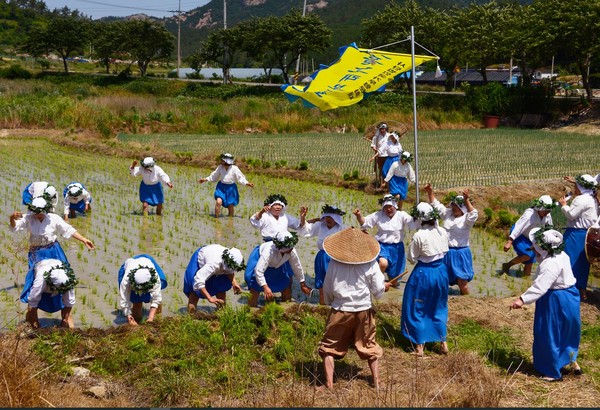
At that time, the villagers and their families arrived in front of their grandmother, and when Grandma Ppong met the people, she said, "The sea road opened and I met you, so I have no regrets," and died.
Therefore, Grandma Ppong is called Yeongdeungsin (Spiritual Light Goddess), and even now, the villagers call Sarira in February Yeongdeungsari (the day when the water is the most drained) and hold the Yeongdeungje the rite.
And the village was renamed Hoedong in the sense that "people came back and met with their grandmother."
So, when you go to Hoedong-ni, there is a marble statue of Grandma Ppong and a tiger to commemorate your name.
It was by a French man who loved Korea that first made this mysterious sea route known as a world-class attraction.
There is a tall sign in Hoedong-ni, Gogun-myeon, on the National Road (No. 18) in Jindo-eup.
There is Pierre Landy Park, where a Westerner’s bust stands on a hill overlooking the blue sea and the modo.

In 1975, Pierre Landy, the then French ambassador to Korea, came to Jindo to collect data on Jindo dogs and witnessed the splitting of the sea off the coast of Hoedong-ni, Gogun-myeon.
Slowly, the tidal flat appeared and the seawater split on both sides as if it is a false story.
It is said that the ambassador, who saw this scene, knelt down on the spot and prayed, thanking for seeing the mysterious scenery of nature such as the Miracle of Moses.
He returned to Seoul and wrote about the impressions of the moment, and contributed the Korean version of "Miracle of Moses" to a French newspaper.
In 1998, Jindo-gun built a park in recognition of Pierre Landy’s contribution on a hill where the visitors can see the opening of the sea route.
Among the two islands floating side by side off the coast of Modo and Hoedong-ni, which become land three or four times a year, Modo is a small island on the right. The bigger island is Geumho Island. It is 1.5km straight from Hoedong and 2.7km when the sea road opens.

Jindo Island was called Okjo Village in the past due to its greasy and good land, but Jindo Island has a fairly fertile soil for an island, so it has been possible to be self-sufficient only with agriculture since ancient times.
In addition, even in winter, the temperature does not fall below zero, and therefore farming is practically possible all the year around.
Therefore, it is also the background of the emergence of Jindo's unique culture, which is different from other island areas.
It is also a Yehyang (Country of Arts) where poetry, calligraphy, and painting developed because there is no worry about making a living throughout the year, and it is a place where scholars who came to exile during the Joseon Dynasty stayed.
Although Jindo Island was an island, the environment was good, so it was said that most of the returning scholars were political and academic celebrities, and it was Jindo Island's culture that learned the central learning and art from them.
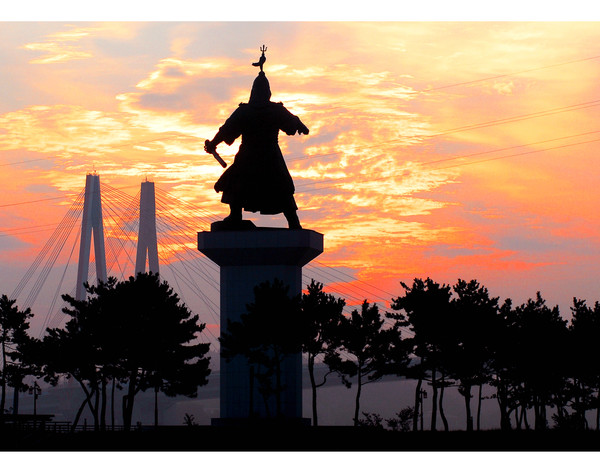
It is also famous for Namdo Pansori song and Jindo Arirang song. The National Gugak (Korean Music) Center is located in Jindo Island, Jindo Gugak High School (special purpose music high school), and Sochi Heo Ryeon, the master of Namjonghwa in the late Joseon Dynasty, is from Jindo Island, and Unlimsanbang and Sochi Museum of Art are located in Jindo Island.
It is a place where fishing and agriculture have developed, and food culture has also flourished.
Overall, there is no significant difference from the food culture of nearby Jeollanam-do, such as Haenam, except for the Namdo Bapsang (southern-style menu), which uses abundant seafood, but there are some unique food cultures.
Jindo Hongju (red wine) is famous for its vivid red color, and Ddeumbukguk (soup), which is boiled with seaweed and beef, is also unique and delicious. Blue crabs caught in Jindo Island are also exceptionally famous and of good quality.
Jindo Island became a land-like island because it is connected to Munnae-myeon, Haenam-gun, which is a land, and Jindo Bridge, a bridge over land.
After trot singer Song Ga-in became famous in 2019, Song Ga-in Village became a new tourist attraction in the Jindo Island, and Sol Beach, a Jindo resort, was built and opened in 2019.
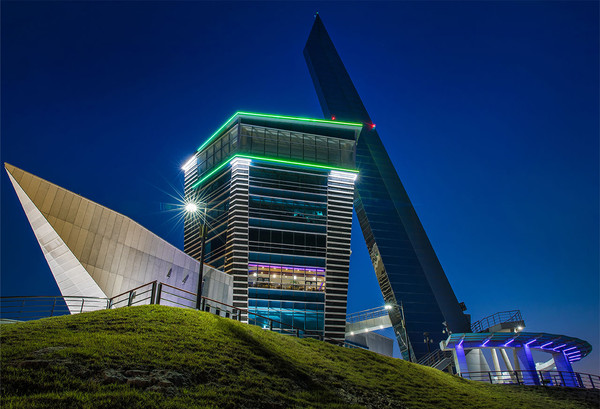
History of Jindo
The Prehistoric Age:
There are many more menhirs and dolmen in our island than any other area, which suggests that people have been living here since the Neolithic era. Around this time, this island was called “Basket Island”
The Period of the three kingdoms:
In Baekje Kingdom, the local government office, called Injindo-gun, was located in now Gosung Gogun-Myeon. As for Younghyeon, there were 2 Hyeons, one was Dosan Hyeon, which is now the Gogun-Myeon in the Gunae-Myeong area, and the other was Maeguri-Hyeon, which is now Imhoe-Myeon area. During King Euija’s 20th year (660), Baekje Forces surrendered to the Silla-Tang Allied forces and Jindo were included to Daebangju-Hyeon, which had been established in now Naju.
In the Silla Kingdom, Jindo belonged to Mujinju (Gwangju at present), which was one of 9 states according to reorganizing of administrative districts as directed from King Munmu’s 17th year through King Sinmunn’s 7th year (687). Jindo-Hyeon was newly organized and the Gogun-Myeon area belonged to Mooan-Gun. Then, Dosan-hyeon was renamed to Gosan-hyeon; the government office in now Wolgadeul. The office of Maeguri-hyeon was placed in Bongsangrideul.
In King Gyeongdeok’s 16th year (757), Dosan-hyeon was elevated to Noesan-Gun and separated from the previous governmental district, and Maeguri-Hyeon was changed to Tamchum-Hyeon and it belonged to Noesan-Gun.

The Goryeo Dynasty:
In March of King Taejo’s 23rd year (940), when the government changed all the administrative districts and states, the name Gun, Noesan-gun was abolished and was renamed as Jindo-Gun. It was made independent with Gaheung-Hyeon, Tamchim-Hyeon, Imhwa-Hyeon, Jindo-Hyeon, and Oei-Hyeon Goseong had been designated as the main local governing center with three Hyeon under that which established Hyang in Euisin.
In July of King Sungjong’s 14th year (995), this island was called “Haeyangdo.” It was renamed to “Okju-Gun” and became one of the 14 states. In February of King Hyunjong’s 9th year, Okju was changed to Jindo and the government office that was in present Goseong was moved to present Yongjangdeul in Gunae-Myeon.
In June of King Wonjong’s 11th year (1270), “Mr. Bae Joong-son”, one member of Sambyeolcho named one of royal blood, Seunghwahyon, as the king and set up the capital in Yongjang. But Hondo, the head of Mongolian invaders, subdued Jindo, and most of villagers were captured and sent to Mongol by force. At that time, Jindo was almost empty land. To make matters worse, from July in King Chunjeong’s 2nd year (1350) to November of the next year, all the villagers had to take refuge three times in Worak, Myeongsan and finally to Geumsan due to the Japanese pirates’ invasion. During this time, the people could not return to Jindo so the local government office was settled in Gumsan. There were not any government offices in Jindo for 80 years.
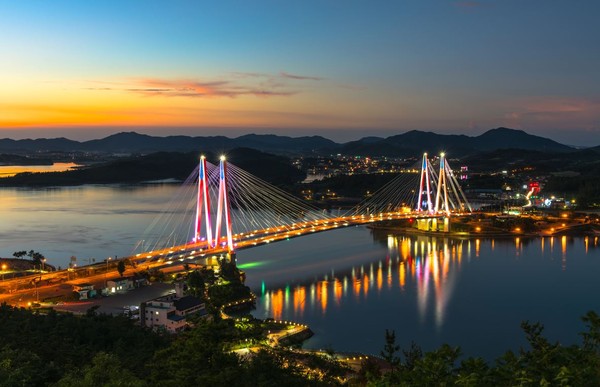
The Joseon Dynasty:
In King Taejong’s 9th year (1409), Jindo had been called Jaejin-Gun due to a merger with Haenam-Hyeon in King Sejong’s 19th year (1437), it came to be called Jindo-Gun after the separation from Haenam-Gun. On June 29th the same year, the first County Mayor, Yang Kyeong, set up a governmental office in Goseong area, but he found that this area was not as good as the seat of county office, and so he moved the government office to Jindo-Eup in 1440 (called the year of Gyeongsin). After, going through many reorganizations, Jindo County consisted of a total of 8 Myeons with two Myeons of Samcheon-Myeon and Myeongsan-Myeon, which belonged to land area and 6 Myeons of Gunae-Myeon, Gogun-Myeon, Euishin-Myeon, Imhoe-Myeon, Eupnae-Myeon and Mokjang-Myeon which belonged to the island area.
In King Gojong’s 30th year (1895), while the local administrative system was reorganized, Eumnae-Myeon was changed to Bunae-Myeon and Gunnae-Myeon to Gun 1 and Gun 2, Gogun-Myeon to Go 1 and Go 2, Euisin-Myeon to two Myeons of Myeonggum and Euisin, Imhoe-Myeon to Im 1 and Im 2, Mokjang-Myeon to Jisan-Myeon, and then the other two Myeons of Gasado-Myeon and Jodo-Myeon were newly created. Also Myeongsan-Myeon in Yeongam, Samcheon-Myeon in Haenam and 5 Myeons in Muan were unified into one Myeon. Therefore total 17 Myeons belonged to Naju-Bu
In King Gwangmu’s 10th year (1906), Myeongsan-Myeon and Samcheon-Myeon belonged to Yeongam and Haenam-Gun.

After the Joseon Dynasty
In 1914, when abolition and amalgamation was carried out, Docho belonged to Muan-Gun, and finally Jindo-Gun had 7 Myeons of Jindo-Myeon: Gunae-Myeon, Gogun-Myeon, Euisin-Myeon, Imhoe-Myeon, Jodo-Myeon and Jisan-Myeon, and 101 Ri
In 1963, Majindo-Ri, Jodo-Myeon was included with Jangsan-Myeong, Sinan-Gun, and in 1973, Suyeok-ni, Suyu-Ri, Haechang-Ri and Sanweol-Ri in Gunae-Myeon were included with Jindo-Myeon.
In 1975, Daeya in Nokjin-Ri Gunae-Myeon was dispersed, and the 226 Ris became 227.
In 1979, Jindo-Myeon was elevated to Jindo-Eup, and it was assigned 1Eup, 6 Myeons, 99 Ris (Unyeongni 227)
In 1980, 4 new Ris were formed by being separated from their original district. Naesanwol was separated from Sanwol-Ri Jindo-Eup, Yongho-Ri from Gagye-ri Gogun-Myeon, Supum-Ri from Jeopdo-Ri Euisin-Myeon, and Sambongam-Ri from Bongam-Ri Jisan-Myeon, and so the total number of Ri became 231 from originally 227.
In 1983, Gosan Island and Pyeongsa Island, with their affiliated small islands, were included with Sinan-gun from Manjedo-Ri and Gasado-Ri. Therefore, administrative Ri was reorganized to 98 from 99 and steering Ri came to be 229 from 231.
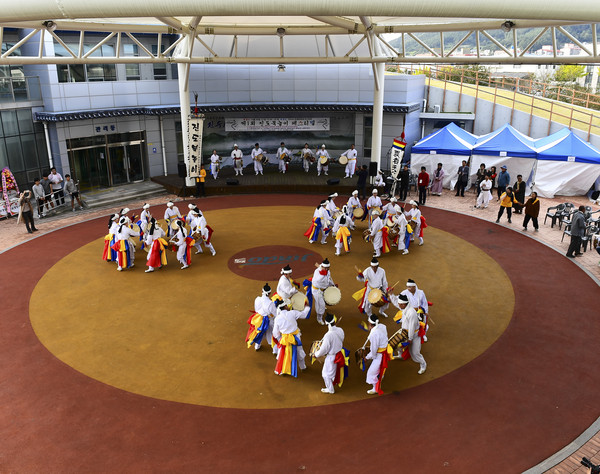
In 1986, Sajeong-ni Jingdo-Eup was separated to Sajeong 1Ri and Sajeong 2Ri, and Jeondu-Ri became to Jundu 1, Jundu 2 and Chungnyong. Then Sugyo-Ri Imhoe-Myeon was divided into Gobang and Gubunsil, and Suma-Ri Jisan-Myeon was separated into Suyang and Masa. Lastly, Eoporyu was split from Chang-Ri Jodo-Myeon. Thus the 229 steering Ris came to 236. In 1987, Yomjang-Ri Imhoe-Myeon affiliated to Jindo-Eup.
By the reorganization of government setups in 1990, Jeodo and 5 other small islands were included with Jindo-Eup from Sinan-Gun.
In 1992, the total number of Ris became 241 from 236 by splitting or creating into several administrative districts as follows: from Domuk-Ri Euisin-Myeon to Domok-Ri and Dohang-Ri, from Jeopdo-Ri to Wonda-Ri, from Joungrim-Ri Imhoe-Myeon to Dongheon-Ri, from Soengmu Jisan-Myeon to Baegyondong-ri, lastly from Simdong-Ri into Sansimdong-Ri and Hasindong-Ri.
The separation of Jeonggeo-ri from Wolga-ri, Gunnae-myeon in 2005 changed Jindo’s 241-ri to 242-ri in all.

